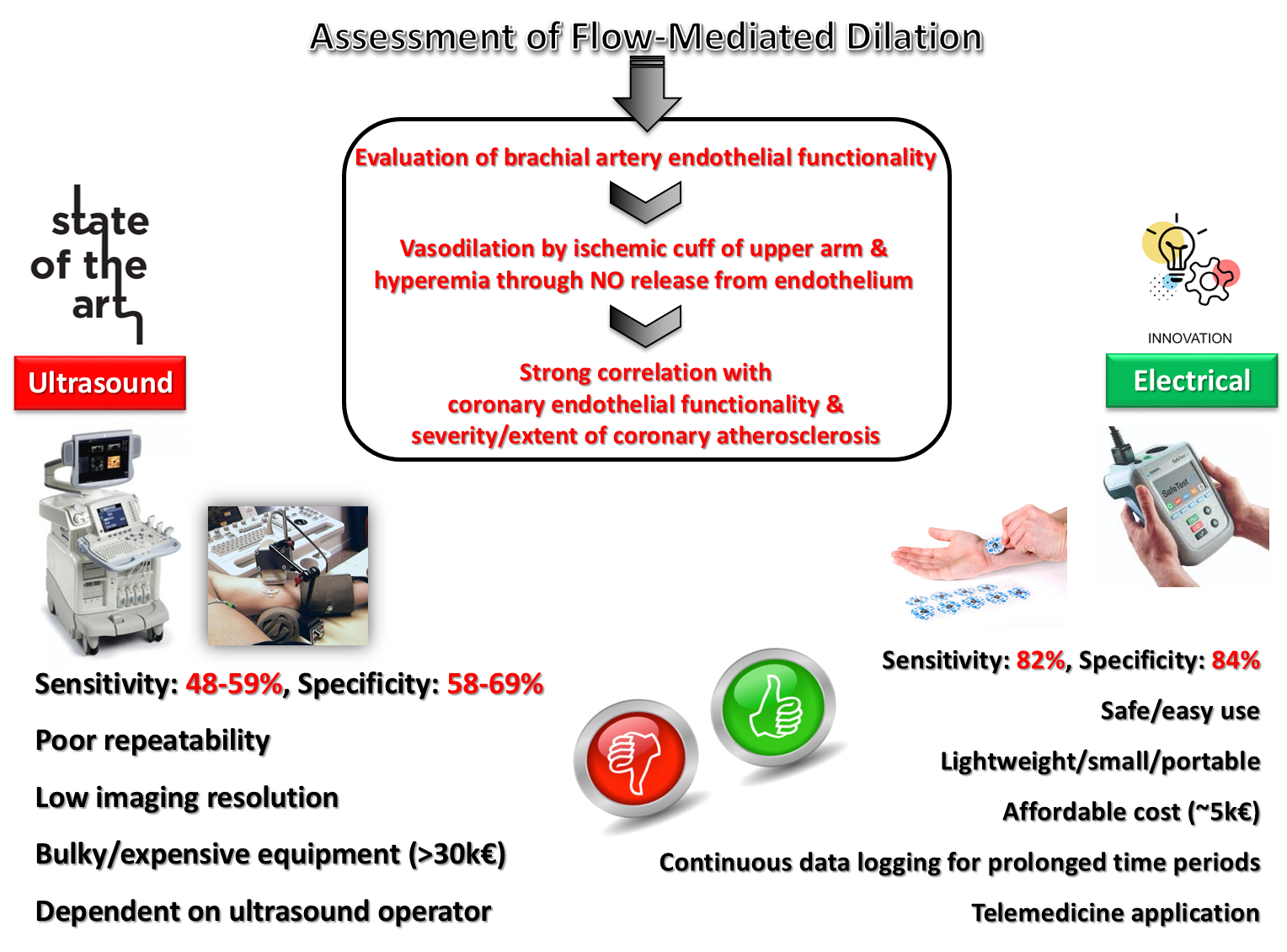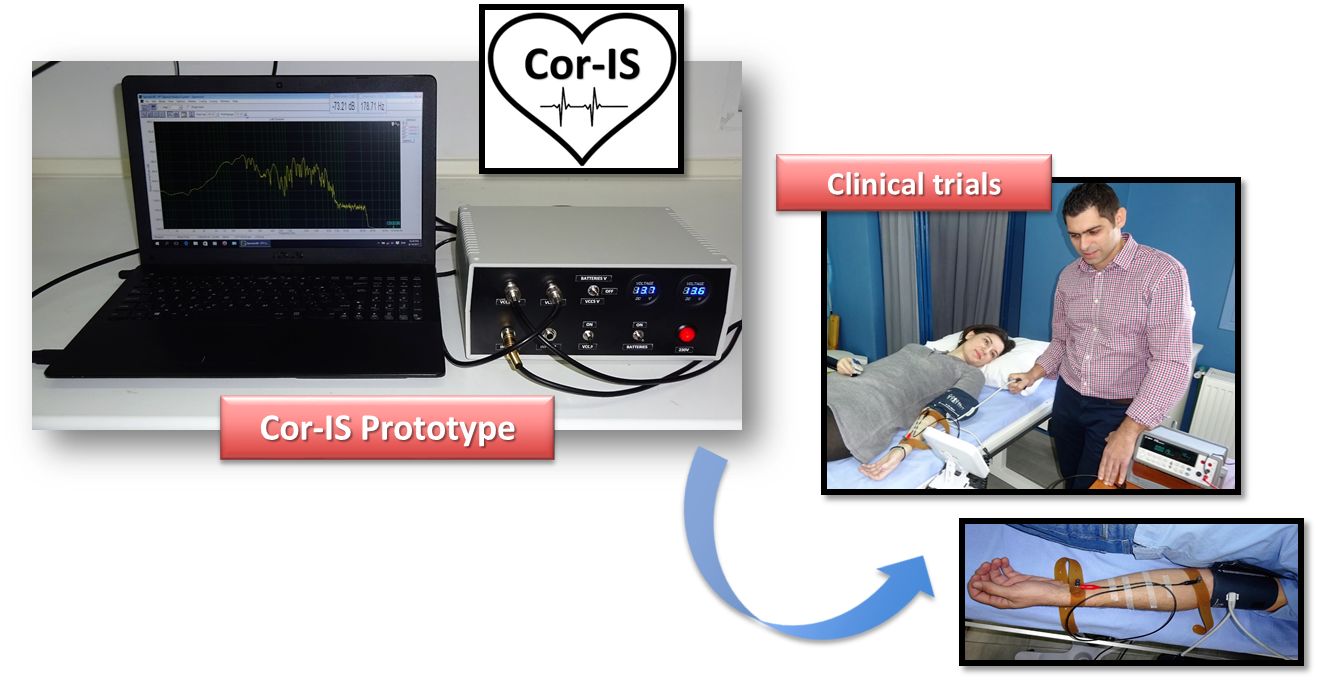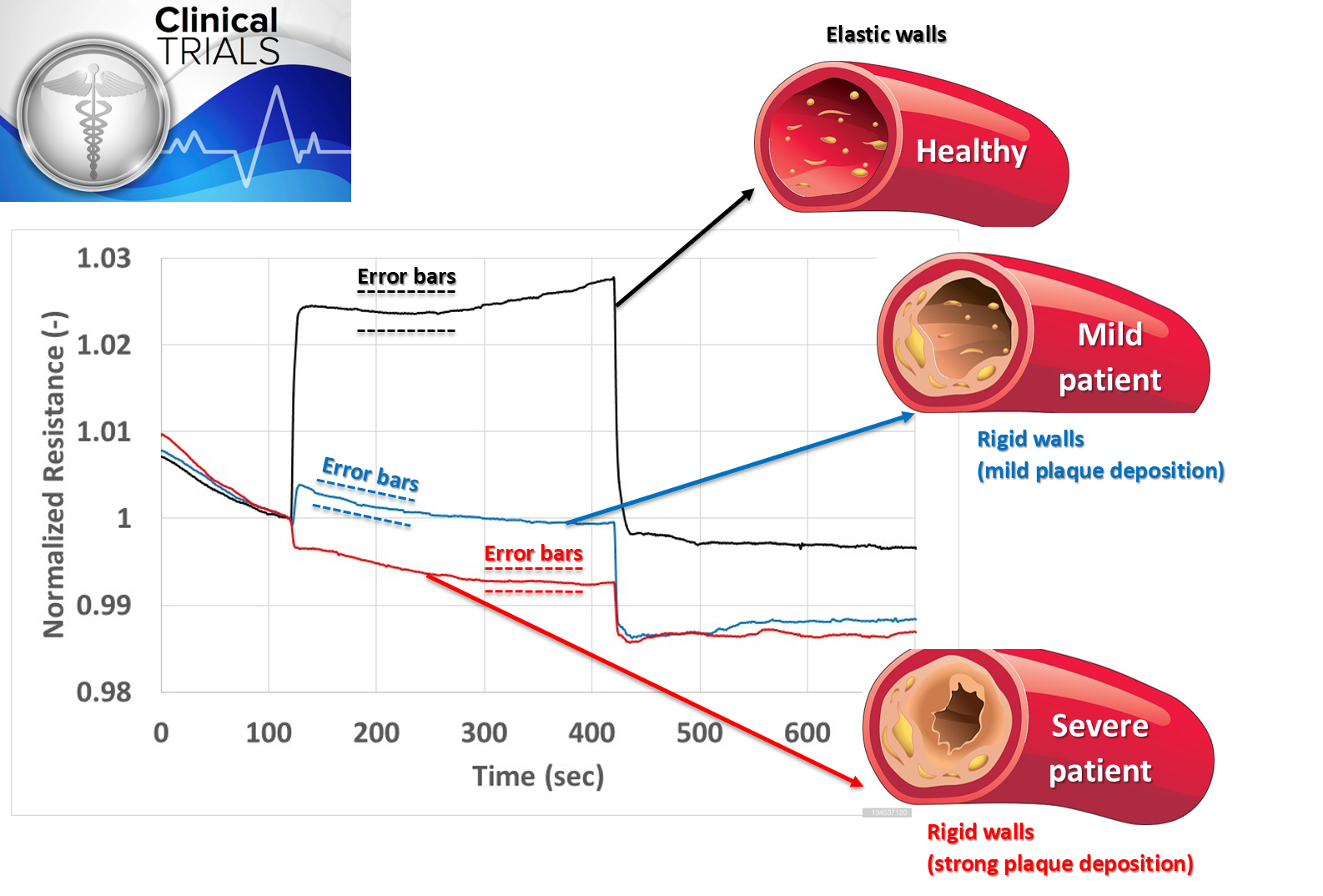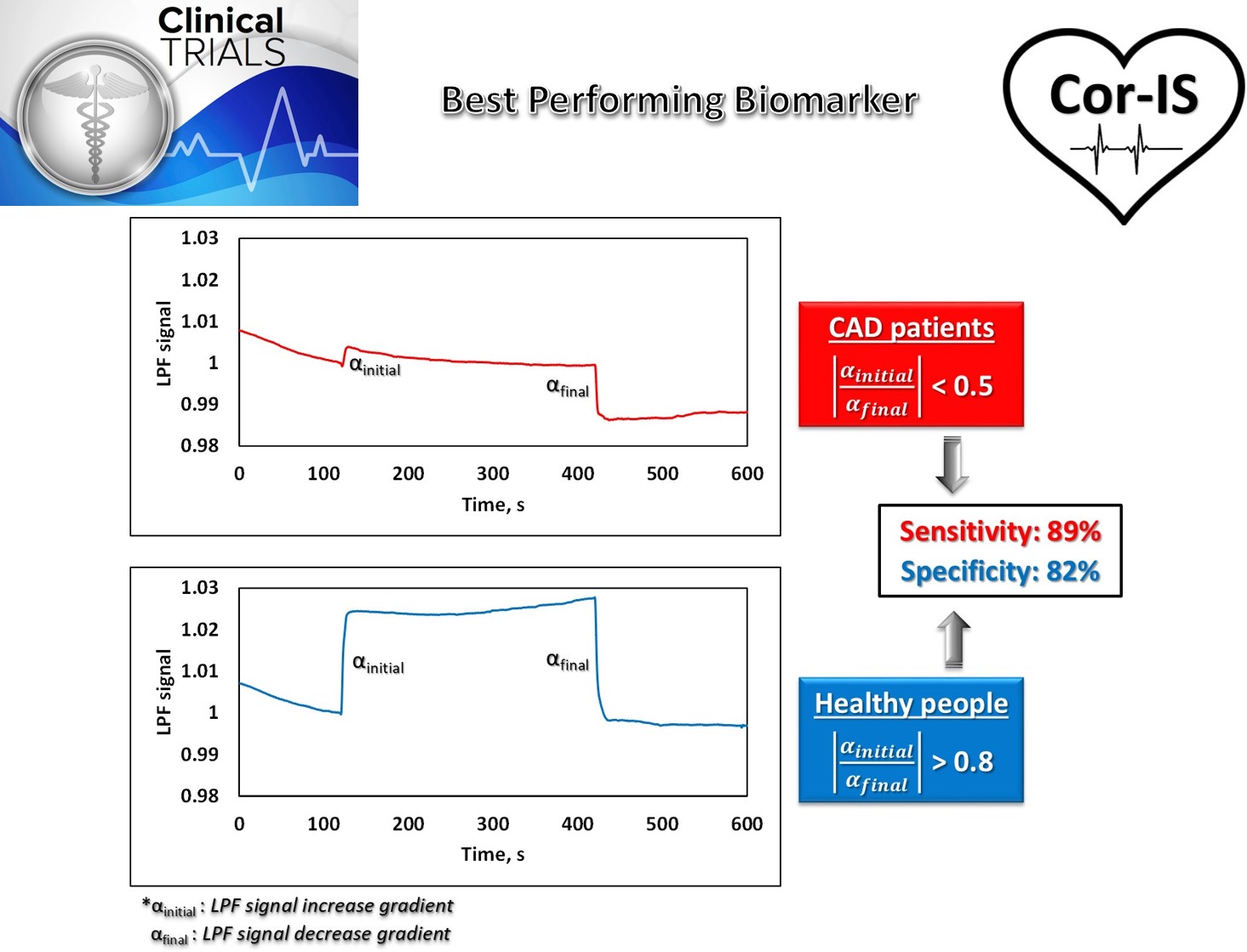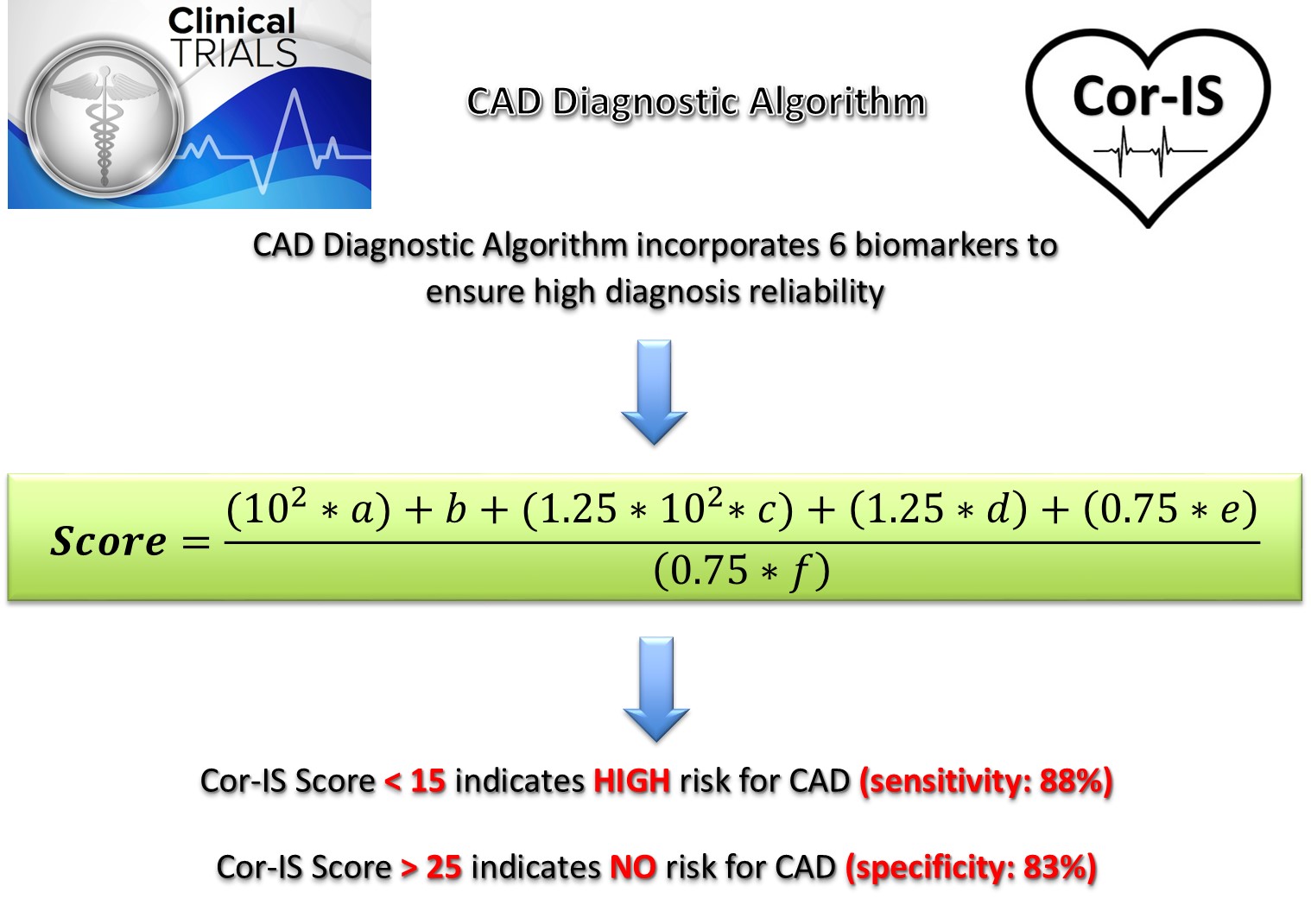Contact Persons: S. Evgenidis [sevgenid@chem.auth.gr], K. Zacharias [ko_zach@yahoo.gr], G. Karagiannis [giorgos38doct@yahoo.com], N. Chatzhpapa [nikoletaxatzhpapa@hotmail.com], Doumas M. [michalisdoumas@yahoo.co.uk]
Coronary Artery Disease (CAD) develops when the major blood vessels that supply heart with blood, oxygen and nutrients (coronary arteries) become damaged or diseased. Cholesterol-containing deposits (plaque) in arteries and inflammation are usually to blame for coronary artery disease. When plaque builds up, it narrows coronary arteries, decreasing blood flow to the heart. Eventually, the decreased blood flow may cause chest pain (angina), shortness of breath, or other coronary artery disease signs and symptoms. A complete blockage can cause a heart attack.

Cor-IS is an EU patented, non-invasive, portable, accurate and easy to operate device for CAD diagnosis (EP 3245947 A1, 2017). It makes use of space technology developed for sensing bubbles presence in the human body of astronauts during Decompression Sickness. This technology is based on an electrical impedance spectroscopy technique of exceptional high sensitivity and accuracy (EP 3005942 A1, 2016). Cor-IS evaluates the functionality of the brachial artery endothelium and, consequently, of the coronary circulation system based on the established FMD (Flow-Mediated Dilatation) medical protocol. Until now, ultrasound assessment of FMD is clinically applied but it has major disadvantages as shown below
Cor-IS device consists of the data acquisition/processing unit which is connected with a cuff and a pair of electrodes which are placed to pre-selected positions of the left hand onto the skin.
Cor-IS measures for varying excitation frequency values the electrical impedance response of brachial artery. The measurement lasts 12 minutes and is divided in three periods: 1st (2 min): Baseline impedance measurement, 2nd (5 min): Application of ischemic cuff that increases measured impedance, 3rd (5 min): Subsequent vasodilation and hyperemia through the Nitric Oxide release from the endothelium that decreases measured impedance. Deposition of atheromatic plaque in the human arteries diminishes vasodilation (endothelium dysfunction). For the first time a continuous electrical signal is acquired and analyzed assessing the performance of brachial artery endothelium. The application of custom-made, advanced algorithms allows the calculation of 6 proper biomarkers for the diagnosis of Coronary Artery Disease. At this moment, a prototype of Cor-IS device has been developed and successfully tested in clinical trials as shown below (Technology Readiness Level: 7):
Distinctions:
- 1st Prize in ‘’Down to Earth Competition’’, European Space Agency (2014)
- 1st Prize in “Falling Walls Lab in Athens”, Falling Walls Foundation & DAAD Hellas (2015)
- Top 100 Breakthroughs of the World in “Falling Walls Lab in Berlin”, Falling Walls Foundation (2015)
- Top 100 Entry in “Create the Future 2017 Design Contest”, NASA Tech Briefs Media Group (2017)
- 1st “Technology Innovation” Prize in “Ennovation 2018”, Athens (2018)
